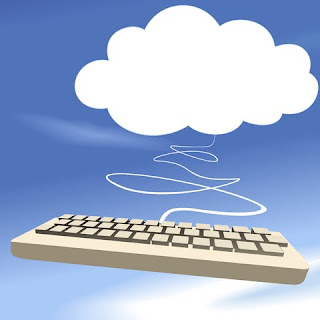 Cloud computing - a hot term that is becoming part of the standard IT vocabulary alongside Web services and SAAS. Is it just hype like eCommerce was back in 2000?
Cloud computing - a hot term that is becoming part of the standard IT vocabulary alongside Web services and SAAS. Is it just hype like eCommerce was back in 2000?So what is Cloud computing? I ask this question because there are many different definitions in the market currently and at the same time it is perceived as something that IT Vendors need to offer to stay up to date with technology.
According to Wikipedia Cloud computing is Internet-based computing, whereby shared resources, software and information are provided to computers and other devices on-demand, like a public utility.
What does that mean to your business?
The best way to explain it, is to provide you with an example, Hotmail and Gmail are two great examples of Cloud Computing. The data, application, security and interface are all accessed via the internet by a computer or mobile device of choice, with a certain level of flexibility. The benefits of that are tremendous of course - Simplicity, independency and many more. It is a (new) delivery and cost model to provide IT applications to businesses.
ERP and CRM in the cloud!
Salesforce, Microsoft and Oracle are delivering part of this Cloud computing concept in the market for CRM today. The difference is still the flexibility of the application itself in terms of modifying it to its unique needs for a specific customer. You can subscribe yourself to the ‘Cloud computing’ service today and have theoretically your CRM application up and running the same day. It is basically a hosted environment . Please read this blog article for a high level overview on the difference between hosting, co-location and on-premise.
ERP via Cloud computing - now that is a stretch! Not so much from a technology point of view but more from a business concept in itself. Ask yourself one question to verify the concept ; “Do you trust to have your financial data stored on a server farm”? Technically it should be ok, right…? Maybe it is similar to the idea of internet banking. It was perceived as dangerous and risk-full and now the mass of us is doing it because it is just so easy and saves us time. Have a look at the ERP application, Open Bravo that is completely “in the cloud”.
Other points to consider is how the integration with ERP, CRM and other productivity tools such as email, word processing, data analysing tools such as Excel, Cognos etc. will work on your desktop.
Microsoft On-line services via Telstra is an offering to the market that brings all these aspects together. Mail, Word and Spreadsheet processing, Document Management, Communication and CRM all via the internet hosted at Telstra via a subscription model.
According to Steve Ballmer, CEO of Microsoft, Microsoft is shifting their work (and staff) to the Cloud. It is about 70% now and will be 90% in one year time. That is significant. Microsoft has worked hard on making the platform, server, operating system and productivity tool Microsoft Office ready for the cloud. Windows Azure™ is the foundation for this. It provides IT partners with a platform to build applications on and it provides customers with applications available via the internet.
Steve Ballmer speaks about the five key dimensions of cloud computing. And Salesforce has a simplified video about what Cloud computing is on its website.
My tip: Keep an eye on this development and when you select a new IT Business Solution that you want to have installed on-premise perhaps look to the innovations of the solution itself, if it has the capability to be installed in the cloud with the possibility of providing you the same user experience.




